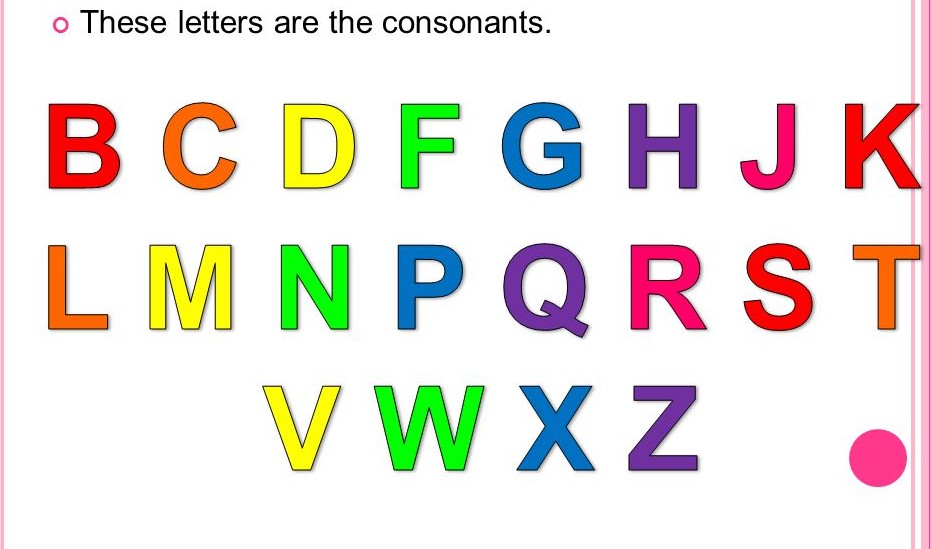When we delve into the world of language, the importance of consonant letters in English cannot be overstated. These letters serve as the backbone of words, providing structure and clarity to our communication. They form the essential building blocks alongside vowels, allowing us to articulate thoughts, emotions, and ideas effectively. Understanding consonant letters not only enhances our grasp of the English language but also enriches our reading and writing skills.
In English, consonant letters are defined as the sounds produced by obstructing airflow, which contrasts with vowels that are voiced with an unrestricted flow. The interplay between consonants and vowels creates the rhythmic patterns we recognize in speech and writing. Learning the consonant letters in English can significantly aid in pronunciation, spelling, and overall language comprehension, making it a crucial aspect of language education.
As we explore the nuances of consonant letters in English, we will answer some common questions that arise regarding their characteristics, classifications, and roles in the English language. This article aims to provide a detailed understanding, paving the way for readers to appreciate the intricacies of consonant letters and their significance in effective communication.
What Are the Consonant Letters in English?
The English alphabet consists of 26 letters, of which 21 are classified as consonants. These consonant letters are:
- B
- C
- D
- F
- G
- H
- J
- K
- L
- M
- N
- P
- Q
- R
- S
- T
- V
- W
- X
- Y
- Z
How Are Consonant Letters Classified?
Consonants can be classified based on various criteria, including:
- Voicing: Voiced consonants (e.g., B, D, G) vibrate the vocal cords, while voiceless consonants (e.g., P, T, K) do not.
- Manner of Articulation: This refers to how the airflow is obstructed, including stops (e.g., B, P), fricatives (e.g., F, S), and nasals (e.g., M, N).
- Place of Articulation: Consonants can be categorized based on where the airflow is obstructed in the vocal tract, such as bilabial (B, P), alveolar (T, D), and velar (K, G).
Why Are Consonant Letters Important in English?
Consonant letters play a vital role in shaping the meaning and clarity of words. They contribute to the distinct sounds that differentiate one word from another. For instance, the words "bat" and "pat" differ only by their initial consonants, showcasing how a slight change can alter meaning entirely. Moreover, consonants often serve as the foundation for various grammatical structures, including plurals, tenses, and more.
What Role Do Consonants Play in Pronunciation?
Pronunciation is key to effective communication, and consonants are integral to this aspect of language. They provide the sharpness and clarity needed for articulate speech. Each consonant has a unique sound, and mastering these sounds is essential for learners of English, particularly non-native speakers. Proper pronunciation of consonants can drastically change the intelligibility of spoken language.
How Can One Improve Their Understanding of Consonant Letters in English?
Improving one's understanding of consonant letters in English involves several strategies:
- Practice Phonetics: Familiarizing oneself with the IPA (International Phonetic Alphabet) can help in distinguishing consonant sounds.
- Engage in Listening Exercises: Listening to native speakers and repeating phrases can enhance pronunciation skills.
- Utilize Language Learning Apps: Many apps offer interactive exercises focused on consonant sounds and usage.
Can Consonant Letters Be Challenging for Learners?
Yes, consonant letters can pose challenges, especially for those learning English as a second language. Sounds that do not exist in their native language may lead to mispronunciation or confusion. For instance, the English "th" sounds (as in "think" and "the") can be particularly tricky for many learners. However, with consistent practice and exposure, these challenges can be overcome.
What Are Some Common Mistakes Involving Consonant Letters?
Common mistakes involving consonant letters include:
- Substituting similar-sounding consonants (e.g., confusing B with P).
- Omitting consonants in words due to unfamiliarity with spelling rules.
- Misplacing consonants in clusters, leading to incorrect pronunciations.
What Resources Are Available for Learning About Consonant Letters in English?
Numerous resources can aid learners in understanding consonant letters:
- Textbooks: Language textbooks often provide structured lessons on consonants.
- Online Courses: Websites and platforms offer courses focused on phonetics and pronunciation.
- YouTube Channels: Educational channels provide visual and auditory examples of consonant usage.
Conclusion: Mastering Consonant Letters in English
In conclusion, consonant letters in English are fundamental to effective communication and language mastery. By understanding their classifications, roles, and challenges, learners can enhance their skills and confidence in using the English language. As we continue to explore the intricacies of consonants, we unlock the potential for clearer expression and richer communication.
Understanding Healthy Body Fat Percentage For Men: A Comprehensive Guide
Unveiling The Legacy Of Constantinople Names
Unlocking The Benefits Of Costco Connection Magazine Subscription


